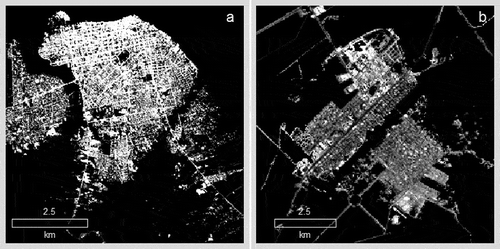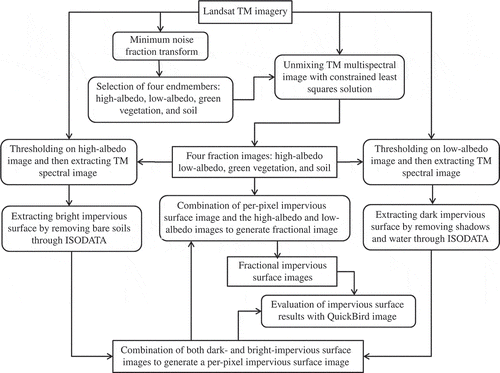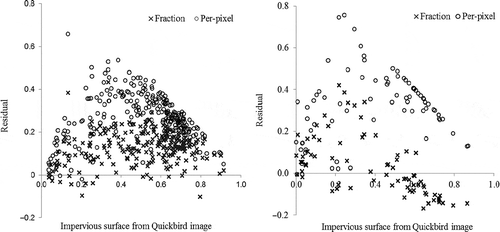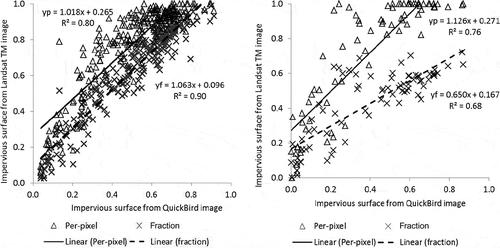Figures & data
Table 1. Assessment of impervious surface estimation results from Landsat TM images for both study areas
Figure 3. Four fraction images – high albedo, low-albedo, green vegetation, and soil in Santarém – a, b, c, d and in Lucas – e, f, g, h, which were developed from Landsat TM images with the spectral mixture analysis approach.
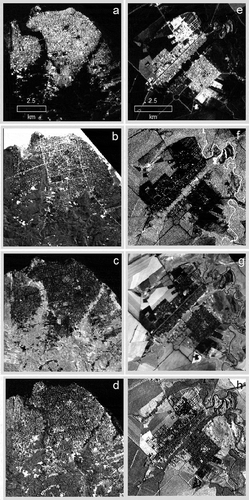
Figure 4. False-color composites from QuickBird images showing the complexity of impervious surface distribution in Santarém and Lucas.
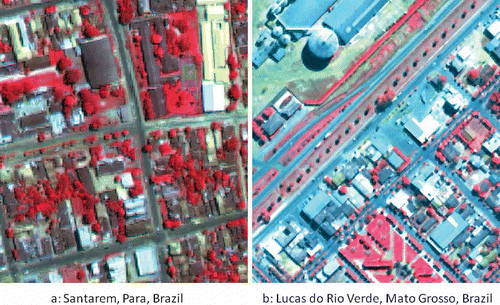
Figure 5. Impervious surface images in Santarém (a) and Lucas (b), which were developed from QuickBird images.
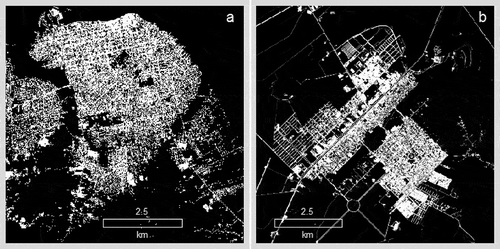
Figure 6. Impervious surface images in Santarém (a) and Lucas (b), which were developed from Landsat TM images using the fraction-based method.
